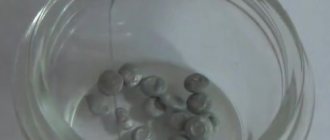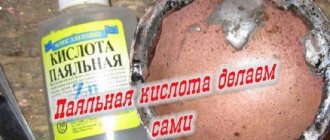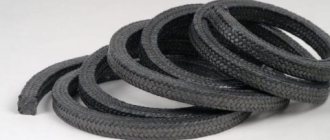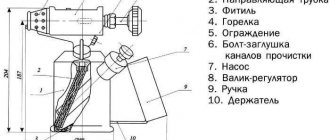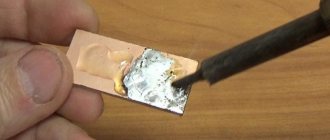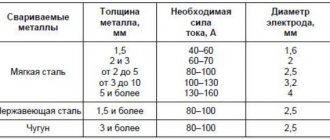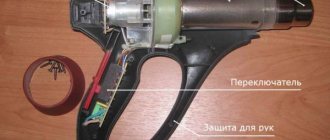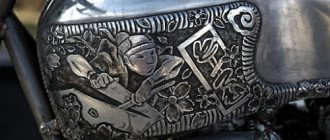Soldering work requires the mandatory use of high-quality flux, which ensures reliable soldering of the material and solder, as well as high electrical conductivity and long service life. Soldering acid is often used as a flux. There are several types of such chemical compounds. The composition of soldering acid directly affects its area of application.
Types of acid fluxes and their composition
Specialists use several types of soldering acids for soldering. They are distinguished by composition and application properties:
- Based on orthophosphoric acid, it is an inorganic compound with the formula H3PO4. As a result of the use of this acid, a protective shell is formed on the surface of the processed material, which prevents further corrosion processes. As a rule, the substance is transparent. Very rarely, the solution may have a cloudy tint - this does not indicate a low-quality product. The color depends on the amount of impurities.
- Based on sulfuric acid as a flux. The formula has been known since school days - H2SO4. Appearance is characterized by the solution being slightly viscous, odorless and colorless. The substance is very potent, so before use it is diluted with either SO3 or H2O anhydride. The percentage of acid in the flux can range from 25 to 80%.
- Based on hydrochloric acid - its composition is expressed by the formula HCL. It has a peculiar smell and may have a yellow tint. It is a very strong acid, so for soldering processes it is diluted with water. In order to improve the solderability of materials, zinc is often added to the acid.
Thanks to the aggressive action of acid, oxide deposits and rust residues are removed from the surface of the material.
What can be replaced?
Instead of using soldering acid, you can use LTI-120 flux, which has a high degree of activation and does not contain any acidic components.
In addition, experts believe that it is enough to use pine rosin to connect the wires.
Such fluxes have the ability to clean the surface well and tin it.
In some cases, soldering acid and fluxes with similar properties can be replaced with a mixture of machine oil and fine sawdust. In this case, the adhesion process occurs while rubbing oil with sawdust when combining the parts.
In addition, the soldering acid composition is replaced with a common pharmaceutical drug: acetylsalicylic acid (aspirin). The tablet is crushed to a powder state, the finished powder is distributed in the soldering area. If you have to solder wires together, they are simply placed on a whole aspirin tablet.
Another option that replaces the soldering acid composition is aspirin mixed with Vaseline in a ratio of 1: 2. As a result of mixing the components, a paste is obtained, which is applied with a wooden stick and removed after completion of work. Acetylsalicylic acid is used for soldering precious alloys. This flux has weak contact with the surface of the product and does not spoil its appearance.
How to make soldering acid with your own hands, see the following video.
Pros and cons of soldering acid
The solution has a number of undoubted positive properties:
- eliminates almost all oxides formed on metal structures;
- prevents the re-formation of oxidative plaque;
- used in a dissolved substance, but can also be used in concentrated form;
- simple technology of use, characterized by a quick effect on the metal.
Of course, there are also disadvantages:
- Not all materials can be soldered with acid, since the substance is very aggressive;
- the acid retains its properties for no more than six months, and during this time it is necessary to follow storage rules;
- store in special containers in rooms with excellent air circulation - direct contact with the substance without protective equipment is very dangerous for the human body.
Soldering acid is widely used when soldering miniature small objects, as it is available in liquid form.
Features of metal soldering
Silver
If you have ever worked with a soldering iron, then you know that soldering is a unique type of permanent connection of metal products using low-melting metal. The technology itself is selected taking into account the type of metals that are to be soldered, as well as the environmental conditions where the action will be performed. For example, processing printed circuit boards from some electronics and repairing silver jewelry are significantly different from each other.
When soldering this way, you should use a soldering iron, solder, and also a flux, which is colophonium.
The step-by-step instructions look like this:
- It is no secret that for soldering elements with a high silver content, solder is used, which contains about 60% tin and 40% lead, which can melt at a temperature of 180 degrees Celsius. Try to prepare solder, which will be indispensable for soldering electronic circuits. This product consists of thin tubes that are filled with resin and act as a flux.
- The surface that will be solderable must first be cleaned of any defects and irregularities that may appear when exposed to the oxide film. In this case, the heated solder can create an effective connection with the silver.
- The part in the soldering zone is heated to such temperatures that natural melting of the solder begins. However, at this stage, some difficulties cannot be avoided, which may be associated with insufficient power reserve of the soldering iron for sufficiently high-quality heating. When soldering silver products, it is important to protect the area from possible exposure to atmospheric oxygen. In this case, colophonium is used, which can create a protective film over the soldering area.
- As for soldering jewelry, it is carried out using high-temperature solders that correspond to the metal standard, or using solders of a lower standard, but containing silver. Soldering jewelry with tin is necessary only in the most extreme cases, and only after prior agreement on all details with the owner of the ring, chain, bracelet or other item. If you do not know how to perform such an action correctly, this can cause damage to an expensive structure.
Read also: Paste for soldering copper wires
Boards
It's no secret that soldering radio components into boards is a simple process . It is much easier to do than connecting loose wires, since the holes in the boards are intended to fix the soldered parts. However, you need to understand that the final result is directly related to the experience and responsibility of the worker. The first circuit that is assembled on a breadboard cannot be called very successful. But don’t worry - after some time the quality of the connections will increase significantly.
Step-by-step instructions and features of such soldering consist of the following points:
- The main goal of the upcoming work is to effectively connect the chip to the board so that a uniformly good soldering is obtained. The event can be divided into several separate stages.
- First, you need to simultaneously bring the solder and the tip of an already heated tool to the area where the connection is required. It is important to follow the key rule, making sure that the soldering iron tip is in full contact with the pin being processed and the board itself.
- During processing, you cannot change the position of the soldering iron tip until the entire contact area is covered with an even layer of solder. In most cases, this takes from 0.5 to 1 second. This time period ensures sufficient heating of the soldering area.
- At the next stage, you need to circle the tip of the tool near the contact being processed in a semicircle, moving the solder in the opposite direction. In the same way, apply another millimeter of solder to the soldering area. During this period, the selected area will warm up quite well, so the solder melted under the influence of surface tension will be distributed evenly over the contact area.
- After successfully applying the required amount of solder to the selected location, you can move the wire away from the soldered area.
- And at the last stage, you should quickly remove the tip to the side. In a short period of time, the liquid substance, with a small layer of flux, will take its final shape and harden, creating a strong connection.
It is important to understand that if the sting is sufficiently warmed up, the action will not take more than 1 second. Try to hone your skills and follow the recommendations of professionals. This way you can achieve incredible success.
Every man can learn to solder, because this procedure does not require any special skills or secrets. In any case, the ability to solder can be very useful and useful in everyday life, where you need to connect wires and parts of electrical circuits, repair a car radiator, and also install copper pipeline elements.
It's no secret that copper is one of those materials that lends itself very well to soldering. In addition, the surface of products made of this metal can be easily cleaned from oxide film, dirt, unevenness and other defects without the use of expensive chemicals and aggressive agents. Most fusible metals have excellent adhesion to copper and do not require the use of expensive or complex fluxes. Copper practically does not interact with air when heated.
Due to such unique properties , metal can be soldered in a wide variety of environmental conditions, using various types of fluxes and solders.
To solder parts, you should use electric soldering irons or soldering stations with different power. It is known that the greater the mass and volume of the part, the higher the power indicators of the working tool should be. If you've never soldered before, a 25-50W device might be your best bet
Purpose of acid
Before soldering, any part must be prepared for applying solder. In addition to removing foreign particles (sand, debris, dust), you need to clean the surface of the material from the oxidizing film. It is with the help of soldering acid that you can chemically act on the surface of the material, get rid of existing plaque and effectively protect the metal from re-formation of the film.
Basically, soldering acid is used for the following metals:
- nickel;
- copper;
- iron;
- non-ferrous metals.
For soldering brass or copper products, for example, borax is used. But to solder steel or aluminum objects, you only need soldering acid. At the end of the process, the flux must be washed off with an aqueous solution with the addition of alkali.
How to solder without a soldering iron
There are cases when you can do without a soldering iron altogether. For example, to solder twists of wires during electrical installation work, it is enough to lower the twist into a container with acid, and then immerse it in heated solder and hold for about 1 minute. This soldering perfectly ensures electrical conductivity of the wires.
To subsequently avoid metal corrosion, flux residues should be removed. In addition, we must not forget that soldering of electronic devices is carried out without the use of soldering acid: it can damage very thin conductive traces of the boards.
Correct choice of fluxes
The choice of acid depends on the application. Not only the composition of the substance is taken into account, but also its concentration. Although under certain conditions, it can be diluted at home. Chemicals have a short shelf life, so when purchasing, you need to pay attention to the date of manufacture of the flux.
When choosing an acid, you need to study the properties of each of them. If the products are quite old and corrosion processes are pronounced, the use of phosphoric acid is optimal. It will effectively remove oxides and rust, which will ensure a reliable connection.
Sulfuric acid, due to its aggressiveness, is used for soldering products of large thickness, since the harm from it in this case is minimized.
Hydrochloric acid, on the contrary, is universal in its application. It is used for soldering various metals, including non-ferrous metals and their alloys.
It is important to note! If a noticeable amount of sediment is observed in the solution, the acid is unsuitable for use. Either the expiration date has expired or the product is of poor quality.
Other soldering features
At the learning stage, many beginners have a question: “what is solder and flux.” Solder is a common form of low-melting metal that is required for successful soldering of radio circuits, electronic components, and jewelry. Most often, solder is made from tin, but in its pure form such metal is not cheap, so it is used only for tin-plating and soldering of utensils, which are used for storing and preparing food. If it is necessary to solder wires and electrical circuits, the tin-lead solder option is used.
When performing soldering work, you may need the following tools and accessories:
- stand for soldering device;
- side cutters;
- pliers;
- tweezers;
- stationery knife;
- vice;
- desoldering pump or copper braid.
The soldering process itself includes several steps:
- Cleaning the selected area to a shine.
- Dipping the soldering iron tip into rosin for more effective cleaning.
- Firmly pressing the connected elements together.
- Then it requires applying a soldering iron with a small amount of solder at the end to the junction of such parts.
- Next, you need to run the soldering iron tip along the part or wire, doing this as quickly as possible to avoid burning out the rosin on the tip.
- The soldering area should be thoroughly heated so that the rosin, when melted, covers the entire surface of the part, and the solder fills the gap between the parts.
- Be sure to remove excess solder with a soldering iron or desoldering iron. It also wouldn't hurt to use braid.
If all operations are carried out exactly according to the established rules, the hardness of the solder will become maximum, and its distribution will be uniform.
If during the solder solidification stage the soldered parts move from place, most likely the soldering is not good enough. To avoid such a course of events, it is enough to learn how to avoid making many mistakes.
Precautionary measures
Since soldering acid is an aggressive substance, handling it requires special precautions.
The container with acid flux should be stored in a tightly closed original container. Exposure to sunlight should be limited; it is better if the room is cool. It is also important that the storage location of the container is inaccessible to children.
Soldering with acid should be done in a ventilated area, preferably with cross ventilation (open windows and doors). You need to work in safety glasses, use a gauze bandage and gloves. In case of contact with the skin, the area is treated with alkali and then washed with running water.
